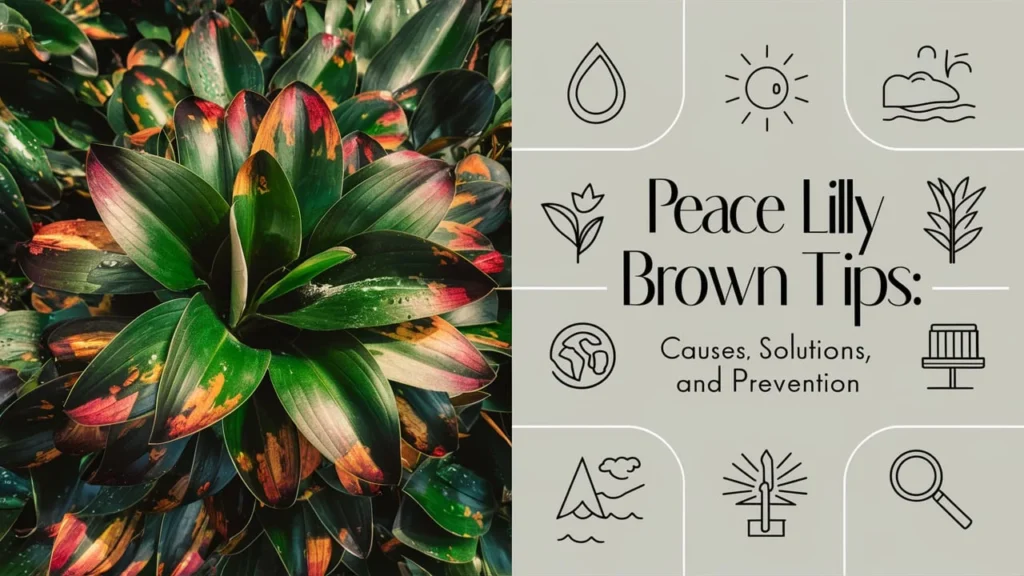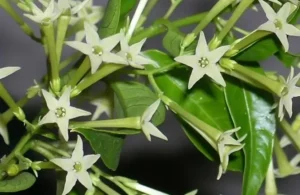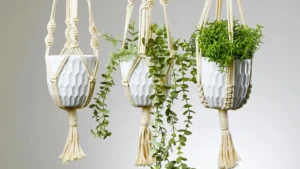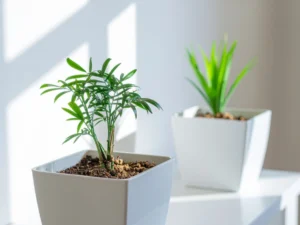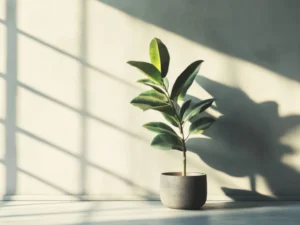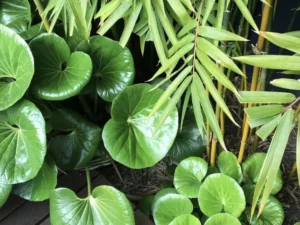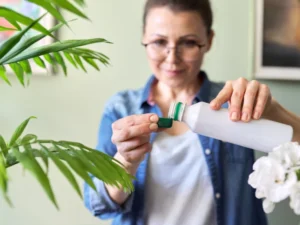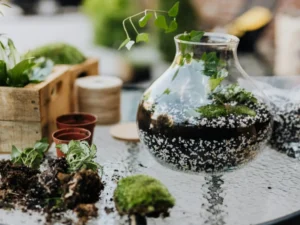Peace lilies are beloved for their rich, green foliage and graceful white blossoms, which is why they have become a popular choice in indoor gardens. Nevertheless, if you’ve been seeing peace lily brown tips on your plant’s leaves—don’t worry, it’s not just you. This problem is often quite troublesome for people who want to maintain the vibrant look of their peace lilies. We will consider what causes those brown tips on them, how to get them back in good health and also ways to prevent them from happening again.
Understanding Peace Lily Brown Tips: What Causes Them? 🤔🍂
Having brown tips on the leaves of your peace lily indicates that something is not right with its care. This can happen due to several factors, all related to how the plant is cared for and its surroundings. Let’s explore some common causes of peace lily brown tips.
Inconsistent Watering Habits 💦🚫
While peace lilies prefer soil that stays consistently moist, they do not tolerate overwatering or underwatering well at all. So if your peace lily has brownish tips it could be from inconsistent watering habits. Overwatering as well as under watering can stress the plant causing dehydration or root rot visible as browning leaf edges.
Low Humidity Levels 🌫️🌡️
Peace Lilies are native to tropical regions where humidity levels are very high. The absence of moisture in the air caused by indoor dryness usually leads to a browning tip at the end of each leave leaf blade found on this plants’ leaves specifically in homes equipped with AC systems or heaters because these machines dehydrate air.
Exposure to Direct Sunlight ☀️🌿
Brown tipped leaves may result when a Peace Lily is placed in direct sunlight, although they prefer bright light that’s indirect. Direct sun is too strong for the delicate leaves of this plant; therefore, they can dry up and get brown edges.
Over-Fertilization 🌱⚖️
Feeding your peace lily can enhance its growth but overdoing it could be harmful. The soil may become toxic with excessive nutrients especially salt which can in turn burn roots leaving the leaves tips of lilies looking brownish. This is usually because of applying too much fertilizer at once or using a high-powered formulation.
Poor Water Quality 🚰🚫
Your water can also be causing peace lily brown tips. The chlorinated tap water often contains elements such as chlorine and fluoride that accumulate in soils resulting to browning leaf tips on them. Similarly, hard water containing many minerals will likely have the same outcome.
Solutions to Treat and Prevent Peace Lily Brown Tips 🌿🛠️

Now that we know what causes peace lily brown tips let’s go ahead to see how you can treat or prevent these problems. By addressing the underlying cause, you can help your peace lily recover and thrive.
Adjust Your Watering Routine 💧📅
You need to strike a balance between having more than enough and not enough water so as to avoid having tipped leave caused by bad watering habits.
Water your silent Eugene when the top inch of the soil feels dry to touch; which would mean it has adequately taken in all the moisture around it with some excess being lost through evaporation hence there could be none left for itself during hot seasons when evaporative demand surpasses its uptake rate from both atmosphere and soil beneath it at any given point in time…
Make sure there are holes at bottom sides of flower pots where excessive wetness cannot build up due lack drainage system thus turning out into root rot disease finally dying off plants completely from lack life support system… In case you have over-watered, don’t water the soil to reabsorb so that it can dry up some before resuming its full water timetable.
Moisturize the air 🌧️🏠
In case low humidity is responsible, there are various means to increase moisture in the air around your peace lily plant. You can water the leaves after some time, install a vaporizer near it or place the pot on a tray filled with pebbles and water. These methods will make it more humid thereby preventing brown tips.
Keep away from direct sunlight 🕶️🌤️
For your peace lily to survive, ensure that it is in an area with bright light but not directly exposed to the sun. If you have put your lily under direct sunlight already, move it to an area which receives filtered light or partial shade. This stops burning of the leaf edges and other issues leading to brown tip growth.
Mid-range application of fertilizer 🧪🌿
To avoid over-fertilizing, dilute your balanced water-soluble fertilizer by half its strength. Give your peace lilies food once every month during growing seasons (spring and summer) then reduce feeding in autumn and winter period. In case of salt burn due to fertilizers, flush out excessive amount salts then do not apply for some months.
Use Pure Water 🚰🌱
Also consider giving distilled or filtered water to your peace lily when tap water contains high mineral content or is chlorinated and fluoridated as this will help avoid harmful chemicals build up in soil causing brown tips.
Preventing Peace Lily Brown Tips in the Future 🌱🌟
Prevention is always better than cure so you can maintain good appearance of peace lilies with proper care practice Here are additional ideas on how you can keep your plant healthy without having those ugly brown tips:
Monitor Your Plant: Observe whether there are changes on leaf coloration hence adjusting accordingly for better handling of peace lilys’ needs. Identifying a problem at an early stage helps to prevent it from becoming worse.
Repotting When Necessary: Peace lilies can become root-bound over time, which hampers their ability to take up water and nutrients. Repot your plant every 1-2 years so that the soil can be freshened up and the roots given more space for growth.
Prune off Damaged Leaves: If you notice brown tips already growing, remove the affected leaves using clean, sharp scissors. This will make your plant neater and stop further spread of damage.
Keep things consistent: Peace lily plants need stable conditions to thrive. Do not place them near drafts or heating vents or air conditioning units as this may result in rapid changes in temperture that stress the plant.
Conclusion:
Although peace lily brown tips are common in many homes, they can be easily addressed with proper care and attention. By understanding why brown tip occurs then implementing provided remedies you will have your peace lilies back to health.
Remember that a happy peace lily is healthy too so just give it the regular attention plus patience required in preventing these dark leaf ends from affecting its well-being.
Therefore, keep them in mind so that you do not let any of these beautiful plants die on purpose as long as you have one indoors and want to enjoy it fully

